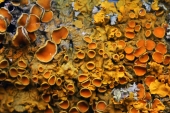You realize that a water sample is only a one-point-in-time sample and in no way guarantees that your water will be potable in the future. Contamination can come from a multitude of sources and you are taking a chance with it if you think you can trust it forever. Your filter isn't foolproof either. You could install a UV light system after your filter, or perhaps a H2O2 system, which would kill germs. Then you could use it for any needs.
also, to all the folks who say your body has adapted to the bugs in your water, that's fine but consider your guests. consider the baby that has a weak immune system or elderly. It's a risk.
also, urine could be infected with bacteria, for those who think it's sterile... if you have a UTI, or when it passes... you are not sterile on the outside.

however, on the topic of your dishes...you need enough of a virus or bacteria or whatever to cause an illness. it's not likely that enough of the containgion would be still ON the plate to make someone sick. that is, if it's smooth, sealed china. (not scratched plastic, porous clay etc.)
Some germs (bacteria or viruses) can live for weeks, and on a hard surface they tend to live longer than a soft one like fabric when dried out. ironic I know. So, two weeks or more for hepatitis and a few others.
here's some info from the web about how long things can live on a surface:
Most gram-positive bacteria, such as Enterococcus spp. (including VRE), Staphylococcus aureus (including MRSA), or Streptococcus pyogenes, survive for months on dry surfaces. Many gram-negative species, such as Acinetobacter spp., Escherichia coli, Klebsiella spp., Pseudomonas aeruginosa, Serratia marcescens, or Shigella spp., can also survive for months. A few others, such as Bordetella pertussis, Haemophilus influenzae, Proteus vulgaris, or Vibrio cholerae, however, persist only for days. Mycobacteria, including Mycobacterium tuberculosis, and spore-forming bacteria, including Clostridium difficile, can also survive for months on surfaces. Candida albicans as the most important nosocomial fungal pathogen can survive up to 4 months on surfaces. Persistence of other yeasts, such as Torulopsis glabrata, was described to be similar (5 months) or shorter (Candida parapsilosis, 14 days). Most viruses from the respiratory tract, such as corona, coxsackie, influenza, SARS or rhino virus, can persist on surfaces for a few days. Viruses from the gastrointestinal tract, such as astrovirus, HAV, polio- or rota virus, persist for approximately 2 months. Blood-borne viruses, such as HBV or HIV, can persist for more than one week. Herpes viruses, such as CMV or HSV type 1 and 2, have been shown to persist from only a few hours up to 7 days.








